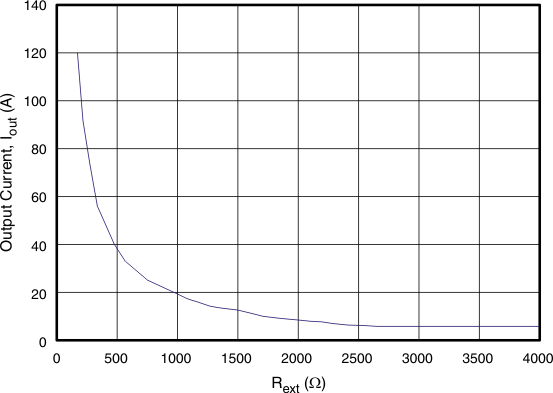SLDS223A March 2016 – March 2016 TLC59116-Q1
PRODUCTION DATA.
- 1 Features
- 2 Applications
- 3 Description
- 4 Revision History
- 5 Description (continued)
- 6 Pin Configuration and Functions
- 7 Specifications
- 8 Parameter Measurement Information
-
9 Detailed Description
- 9.1 Overview
- 9.2 Functional Block Diagram
- 9.3 Feature Description
- 9.4 Device Functional Modes
- 9.5 Programming
- 9.6
Register Maps
- 9.6.1 Mode Register 1 (MODE1)
- 9.6.2 Mode Register 2 (MODE2)
- 9.6.3 Brightness Control Registers 0 to 15 (PWM0 to PWM15)
- 9.6.4 Group Duty Cycle Control Register (GRPPWM)
- 9.6.5 Group Frequency Register (GRPFREQ)
- 9.6.6 LED Driver Output State Registers 0 to 3 (LEDOUT0 to LEDOUT3)
- 9.6.7 I2C Bus Subaddress Registers 1 to 3 (SUBADR1 to SUBADR3)
- 9.6.8 LED All Call I2C Bus Address Register (ALLCALLADR)
- 9.6.9 Output Gain Control Register (IREF)
- 9.6.10 Error Flags Registers (EFLAG1, EFLAG2)
- 10Application and Implementation
- 11Power Supply Recommendations
- 12Layout
- 13Device and Documentation Support
- 14Mechanical, Packaging, and Orderable Information
パッケージ・オプション
メカニカル・データ(パッケージ|ピン)
- PW|28
サーマルパッド・メカニカル・データ
- PW|28
発注情報
10 Application and Implementation
NOTE
Information in the following applications sections is not part of the TI component specification, and TI does not warrant its accuracy or completeness. TI’s customers are responsible for determining suitability of components for their purposes. Customers should validate and test their design implementation to confirm system functionality.
10.1 Application Information
10.1.1 Constant Current Output
In LED display applications, TLC59116-Q1 provides nearly no current variations from channel to channel and from device to device. While IOUT ≤ 52 mA, the maximum current skew between channels is less than ±6% and less than ±10% between devices.
10.1.2 Adjusting Output Current
TLC59116-Q1 scales up the reference current (Iref) set by the external resistor (Rext) to sink the output current (Iout) at each output port. Table 13 shows the Configuration Code and discusses bits CM, HC, and CC[5:0]. The following formulas can be used to calculate the target output current IOUT,target in the saturation region:
Where Rext is the resistance of the external resistor connected to the REXT terminal, and VREXT is the voltage of REXT, which is controlled by the programmable voltage gain (VG), which is defined by the Configuration Code.
The Current Multiplier bit (CM) sets the ratio IOUT,target/Iref to 15 or 5 (sets the exponent CM – 1 to either 0 or –1). After power-on, the default value of VG is 127/128 = 0.992, and the default value of CM is 1, so that the ratio IOUT,target/Iref = 15. Based on the default VG and CM:
Therefore, the default current is approximately 20 mA at 931 Ω. The default relationship after power-on between IOUT,target and Rext is shown in Figure 24.
shows the output voltage versus the output current with several different resistor values on REXT. This shows the minimum voltage required at the device to have full VF across the LED. The VLED voltage must be higher than the VF plus the VOL of the driver. If the VLED is too high, more power will be dissipated in the driver. If this is the case, a resistor can be inserted in series with the LED to dissipate the excess power and reduce the thermal conditions on the driver.
If a single driver is used with LEDs that have different VF values, resistors can also be used in series with the LED to remove the excess power from the driver. In cases where not all outputs are being used, the unused outputs can be left floating without issue.
10.2 Typical Application
The TLC59116-Q1 outputs can be wired in parallel to increase the current per LED string.
10.2.1 Design Requirements
Set the LED current to 50 mA while the IREF register is at the default value (CG = 0.992).
10.2.2 Detailed Design Procedure
The goal of this design is to set the LED current to 50 mA. Because two outputs are in parallel, the LED current should actually be set to 25 mA. With the IREF register at the default value:
Using this equation, the appropriate REXT is calculated to be 750 Ω.
10.2.3 Application Curve
 Figure 24. IOUT,target vs Rext
Figure 24. IOUT,target vs Rext